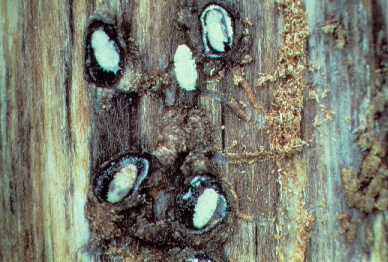
Abstract
Periodic mountain pine beetle outbreaks have killed millions of hectares of lodgepole pine forests in western North America. Within these forests some pine trees often remain alive. It has been rarely documented whether anatomical defenses differ between beetle-killed and remaining live pine trees, especially at the northern latitudinal range of beetles in North America. In this study, we compared the resin duct-based anatomical defenses and radial growth between beetle-killed and live residual lodgepole pine trees, and we characterized the resin ducts and the growth of the residual trees before and after outbreak. We found that tree radial growth was not associated with tree survival. The best two predictors of tree survival were resin duct size and production (number per year). Trees having larger but fewer resin ducts showed higher survival probability compared to those with smaller but more abundant resin ducts annually. Residual trees had larger resin ducts prior to the outbreak and continued having so after the outbreak. We further categorized residual trees as healthy (having no signs or symptoms of insect or pathogen attacks), declining (with signs or symptoms of biotic attacks), and survived (from mountain pine beetle attacks during the outbreak) to investigate resin duct-based anatomical defenses among them. Healthy trees had consistently larger resin ducts than declining trees in the past 20 years in post-outbreak stands. Survival trees ranked between healthy and declining trees. Overall, these results demonstrate that resin duct size of lodgepole pine trees can be an important component of tree defenses against mountain pine beetle attacks and suggest that lodgepole pine trees with large resin ducts are likely to show resistance to future bark beetle attacks.
Read the full paper here.
Citation
Zhao S and Erbilgin N. “Larger Resin Ducts Are Linked to the Survival of Lodgepole Pine Trees During Mountain Pine Beetle Outbreak.” Front. Plant Sci. 10:1459. doi: 10.3389/fpls.2019.01459






